Some years back, when I still worked as a newspaper journalist, I did a series of stories that focused on cutthroat trout in the West. Following the breadcrumbs left behind by renowned fisheries biologist Dr. Robert Behnke, I traversed the Rockies, going from Montana to southern Colorado and from Utah to the slopes of the Eastern Sierra, all in an attempt to gauge the health — and the future — of the native trout of the western United States.
It was an exhaustive project, and it took much of a year to complete. I put my little SUV through its paces, driving some of the loneliest roads in the country just to meet up with biologists, tribal fisheries managers and fishing guides who were busy working to protect or recover native cutthroat trout populations.
My favorite stop was outside of Leadville, Colo., where the Colorado Division of Wildlife (it’s now called Colorado Parks & Wildlife) was working with the U.S. Fish and Wildlife Service to propagate and reintroduce greenback cutthroat trout, a subspecies of cutthroat trout that was once thought to be extinct. The recovery team had planted these resurrected trout in a handful of streams in the Arkansas and South Platte river drainages — the fish were “rediscovered” outside their native range in a small stream on the slopes of Pike’s Peak where they had been transplanted to provide a fishery for tourists visiting the area.
The effort met with modest success over time, but, unfortunately, it was later determined that the fish the team was working to “reintroduce” weren’t pure greenbacks. At some point, they’d become “contaminated” with the genes of Colorado’s more prominent native cutthroat, the Colorado River cutthroat trout. It was a big blow at the time, but the effort to reintroduce greenbacks continues, and success is occurring in fits and starts.
Colorado’s native trout got another boost in 2018, when CPW biologists identified eight separate populations of the San Juan cutthroat trout. Like the greenback, the San Juan was thought to be extinct. A distinct relative of the Colorado River cutthroat trout, the San Juan is native to the high-elevation streams of the San Juan River, which starts on the timbered slopes of Wolf Creek Pass above Pagosa Springs, Colo., and eventually flows into New Mexico and then into Utah where it meets the Colorado at Lake Powell.
The San Juan was rediscovered in the wild thanks to genetic testing done on century-old specimens preserved in the Smithsonian Museum of Natural History in Washington, D.C. When the genetics of the preserved trout were compared to those sampled in the remote headwater reaches of the San Juan, they were found to be identical — the San Juan cutthroat trout had come back from the dead. Today, CPW is working to preserve these isolated pockets of native San Juans, including an effort to remove non-native trout from Wolf Creek and reintroduce the natives in that significant tributary to the San Juan River.
But Colorado’s native trout history isn’t done being rewritten. An effort is underway this summer to try and find the thought-to-be-extinct yellowfin cutthroat trout in the central part of the state. Once native to Twin Lakes southwest of Leadville and just over Independence Pass from Aspen, the yellowfin was rumored to grow big and burly in the high-elevation lakes that are now a significant reservoir in the upper Arkansas River drainage. But their last reported sighting was 120 years ago. Biologists with CPW are spending this summer and likely the next several summers sampling as many creeks, ponds and wetlands in the Twin Lakes drainage in search of the only cutthroat trout believed to be native to the Arkansas River basin. The hope is to find remnant populations of yellowfins and, in time, work to reintroduce the native fish in other watersheds within its native range.
The inspiration? The success in identifying other native trout once thought to be extinct. The search for yellowfins really got its start when greenbacks unexpectedly turned up years ago, and then it got a boost when the San Juans were identified in the state's southern reaches.
“We are going into this search with our eyes wide open,” said Paul Foutz, senior fisheries biologist for CPW’s southeast region. “We know the history of the yellowfin and that it hasn’t been seen since before 1902. But millions of trout, native and nonnative, have been back and forth across Colorado since before statehood. And if the history of the greenback and San Juan River cutthroat teach us anything, it’s that we should never stop looking.”
Like the San Juans, there are preserved samples of yellowfin cutthroat trout at the Smithsonian. That’s a handy genetic resource — if the group of biologists searching for yellowfins can match the genetics from any wild cutthroats found in the backcountry, the yellowfin, like San Juan and the greenback, could be resurrected.
And, truth be told, the biologists aren’t just saddled with roaming the Sawatch Range looking for backcountry seeps and springs that might hold hidden populations of native trout. Millions of trout were once propagated by the Leadville National Fish Hatchery, and specimens were sent far and wide across Colorado. Just like the greenback was discovered outside its native range, it’s possible that yellowfins could turn up just about anywhere they might have been planted more than 100 years ago. This effort isn’t just about wandering the woods in hopes of finding that needle in the haystack — the biologists will be examining historical stocking records from the hatchery and doing some ground-truthing in other drainages where yellowfins might now exist unbeknownst to anyone working on the effort via CPW.
Part of what makes the search for yellowfins so interesting is the fish’s life history — it was a piscavore that prowled Twin Lakes and grew quite large. According to Behnke’s research (the renowned biologist died in 2013), the first reported encounter with yellowfins was in 1885 by Colorado Fish Commissioner John Pierce, who described the fish as having yellow markings and, oddly, yellow flesh. And, the report noted, the fish weighed 10 pounds.

Behnke also noted that there was an effort to introduce yellowfins into Island Lake on the Grand Mesa, far to the west, but reports of fish persisting there into the 1930s are unsubstantiated. And, in an interesting little research breadcrumb: David Star Jordan, who documented yellowfins for the U.S. Fish Commission in 1889, indicated in his autobiography, “Days of Man,” published in 1922, that yellowfins were “successfully introduced into France from eggs shipped from the ... Leadville hatchery.”
But the search will likely start closer to home. In a 2020 survey, there are 236 waters that have no stocking data, meaning it’s possible that no fish, native or otherwise, were planted in them. These lakes and streams are likely the best places to start the search for yellowfins.
“Although these fish are no longer present in Twin Lakes, the possibility exists that a remnant population with pure genetics might be found in the high mountain lakes, tributaries and drainages to Twin Lakes,” said Alex Townsend, an aquatic biologist with CPW.

The yellowfin’s demise in Twin Lakes is likely attributable to two factors. First, mining in the area was very prominent in the area in the late 1800s, which not only contaminated the rivers and streams with acid mine runoff, but also resulted in a lot of trout being caught for food for burgeoning mining camps. Second, non-native trout likely pushed yellowins over the edge — when the lakes were sampled in the early 1900s, introduced rainbow trout were the prominent fish.
Despite the fact that it’s been well over a century since yellowfins were last documented, the team of biologists on the prowl for a remnant population of one of Colorado’s four native cutthroat trout subspecies remains hopeful.
“I know how exciting it was to discover that greenback cutthroat trout still existed in our waters,” Foutz said. “Our world is diminished anytime a species goes extinct. Searching for the yellowfin is the fulfillment of CPW’s basic mission of perpetuating the wildlife resources of the state. Based on our recent discoveries of hidden greenback and San Juan cutthroats, we’d be remiss if we didn’t search for the yellowfin.”




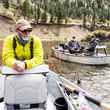



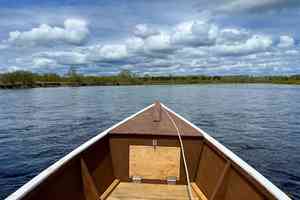



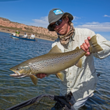
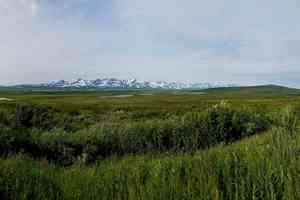












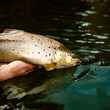

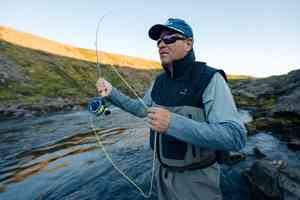




Comments
Mark Zemke replied on Permalink
Fascinating stuff ... GOOD HUNTING to the CFW folks searching for a remnant population of yellowfin cutts.
John Marsman replied on Permalink
I love nostalgia too. And it sounds nice to bring back some specie. But the benefit... other than sounding nice. The time, effort
and money could perhaps be spent on improving current conditions, huh???
Jonathan Antunez replied on Permalink
There is a funny little note in Charles Orvis's book about a fish called a California Trout which had yellow markings and flesh, caught out of ST. IGNACE ISLAND in Lake Superior. No idea what they are referring to, but this article came to mind as I read the book.
Pages